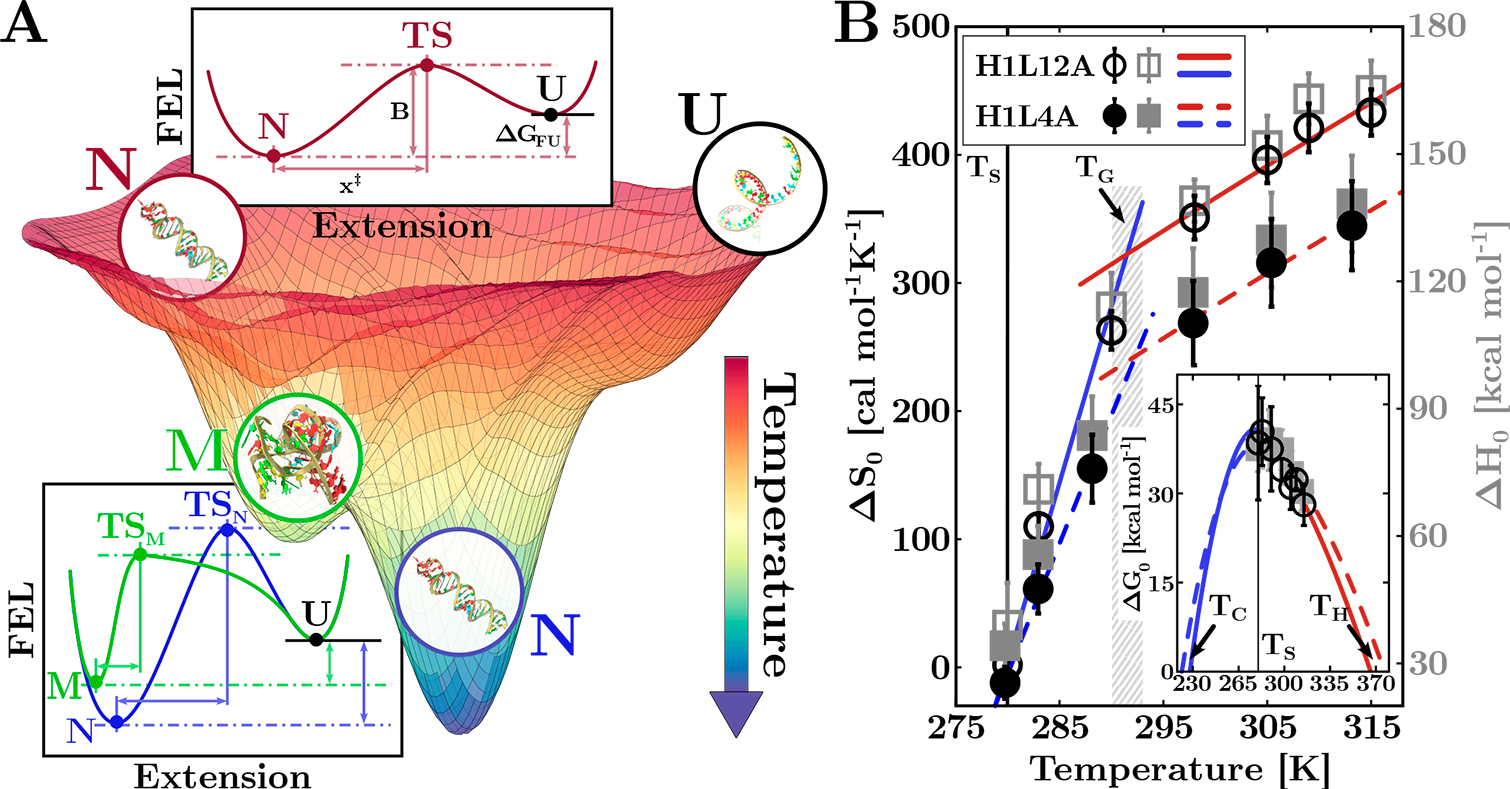Cold RNA
RNA is a central molecule for life with many functions, from information storage to catalytic activity. The main difference with DNA is the presence of the ribose 2′-OH hydroxyl group that enables RNA to hydrogen bond with nucleotides and water and catalyze reactions mediated by metal ions. Recent experiments in our lab [1] using temperature-controlled optical tweezers have shown that RNA hairpins invariably form alternative misfolded structures below a glassy temperature of 20ºC, a phenomenon that is not observed with the corresponding sibling DNA sequences.
The nature of the RNA folding landscape aligns with the previously reported strong irreversibility observed in unzipping experiments of 2-kilobase RNA hairpins [2]. RNA is known to misfold at low temperatures as it can form multiple contacts, many of which are non-native. Our results indicate that an altered RNA biochemistry, determined by sequence-independent ribose–water interactions, outweighs sequence-dependent base pairing. The ubiquitous ribose–water interactions lead to universal and novel thermodynamic RNA phase transitions below the glass transition, such as maximum stability at 5°C where water density is maximum, and cold denaturation at −50ºC.
Cold RNA may have profound implications for understanding the cold adaptation of RNA biochemistry in present-day psychrophilic (cold-loving) biota and may have shaped the evolution of a primordial RNA world. The discovery of cold RNA has triggered further research in the frame of a recently funded HFSP grant 2025.
[1] P. Rissone, A. Severino, I. Pastor and F. Ritort, Universal cold phase transitions in RNA, Proceedings of the National Academy of Sciences 121 (34) e2408313121 (2024)
[2] P. Rissone, C. V. Bizarro, F. Ritort, Stem loop formation drives RNA folding in mechanical unzipping experiments, Proceedings of the National Academy of Sciences 119 (3) e2025575119 (2022)



